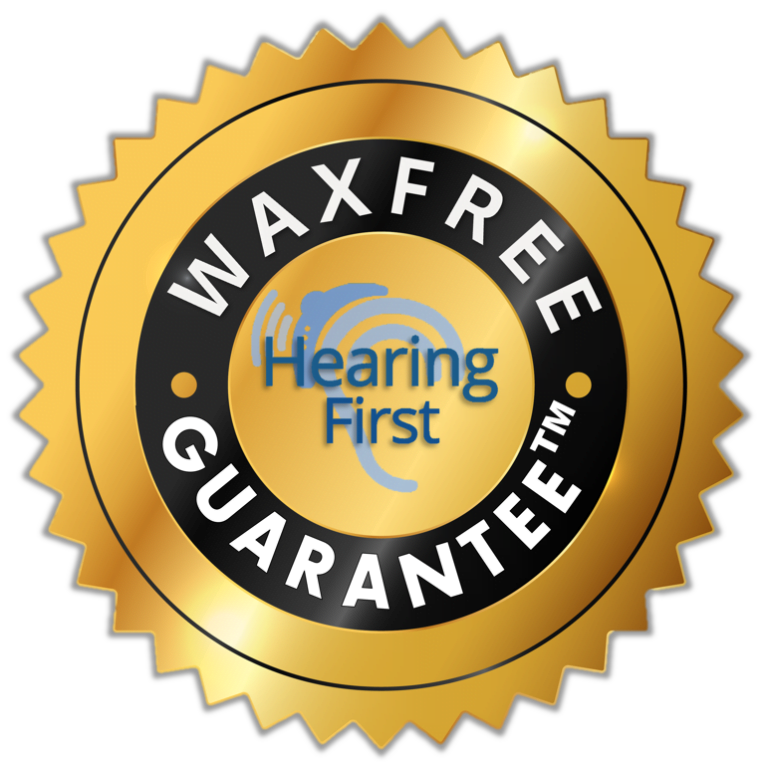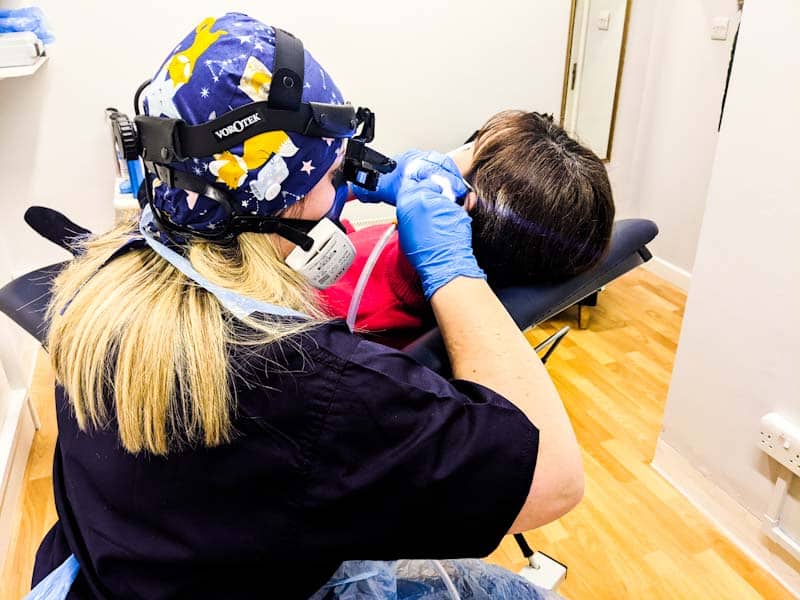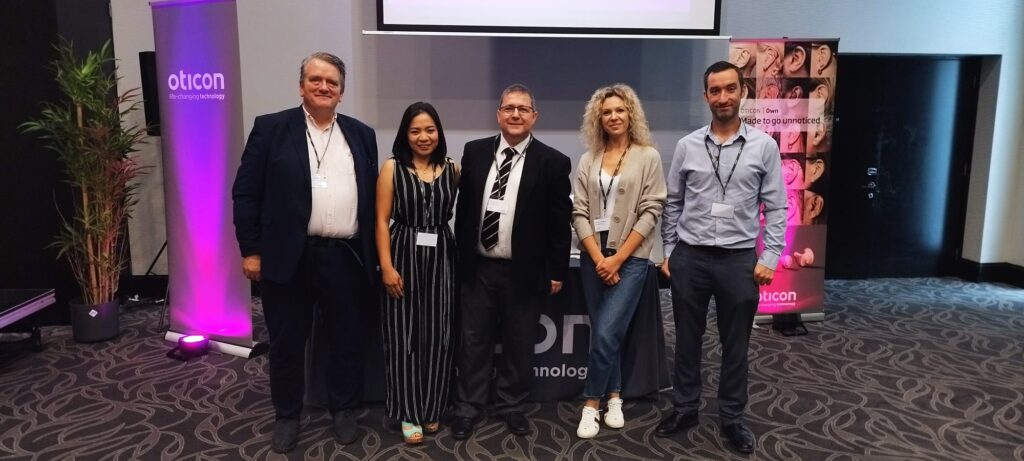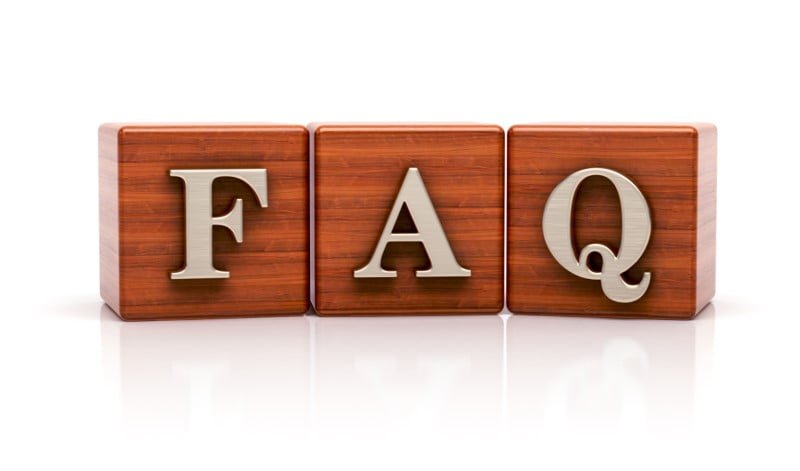Hearing First Edgware – Ear Wax Removal Using Microsuction
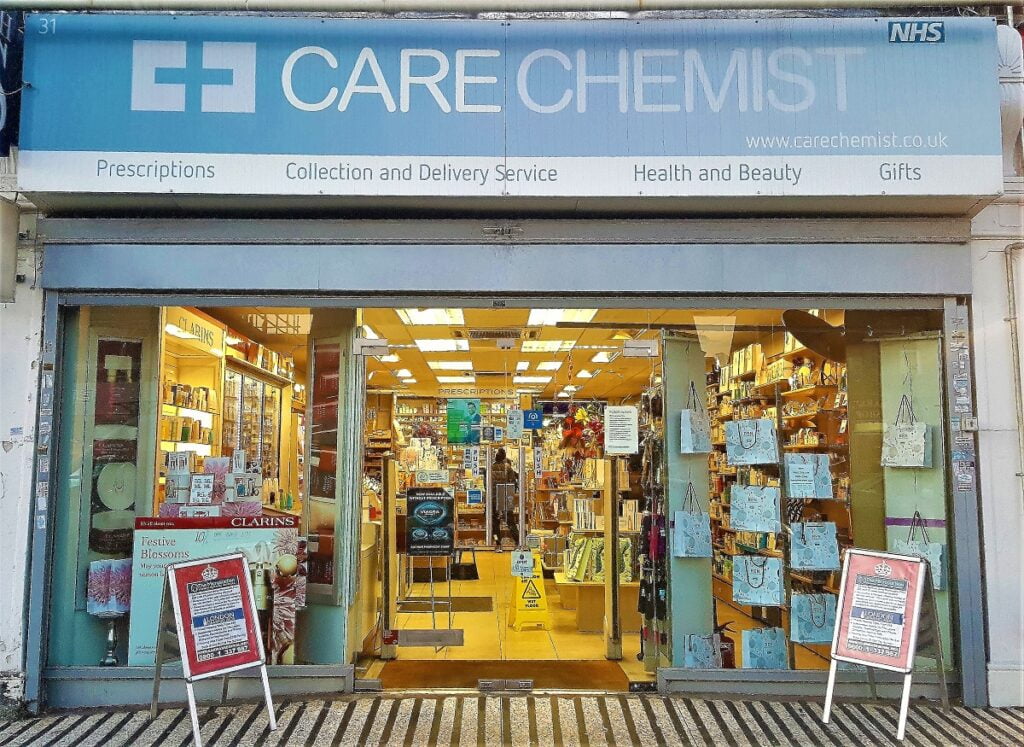
Hearing First Edgware – Ear Wax Removal Using Microsuction
Waxfree Guarantee™: The only ear wax removal clinic in Edgware offering the Waxfree Guarantee™. See details about our Waxbusting Protocol™ below.
We’re the only specialist microsuction ear wax removal clinic in Edgware providing Microsuction Earwax Removal and Manual Instrument Earwax Removal by our expert earwax removal practitioners. All of our earwax removal practitioners are hand-picked by our founder, Jason Levy. We really are the ear wax removal experts in Edgware.
Our convenient location in Edgware, North London, also serves Stanmore, Colindale, Burnt Oak, Belmont, Borehamwood, Queensbury, South Mimms, Brookmans Park, Potters Bar, Southgate, Hadley Wood, Arkley, Kitt’s End, Oakleigh Park, Highwood Hill, Whetstone, Northaw, Cockfosters, Hendon and Finchley.
Services we offer are:
- Microsuction Ear Wax Removal
- Manual Instrument Ear Wax Removal
- Under 18 Microsuction Ear Wax Removal: We provide microsuction ear wax removal for age 12-17 when accompanied by a parent or guardian.
- Hearing Tests: We can test your hearing and explain the meaning of your test results – We are not part-owned by a hearing aid manufacturer, so unlike some High Street chains, we won’t offer you a “free” hearing test and then push you to buy hearing aids.
- Impartial Hearing Aid Advice: If you want friendly, impartial advice, we are an independent company that is not part-owned by a hearing aid manufacturer, so we can advise you on which model will be the most appropriate, given your unique lifestyle requirements. We provide all the latest digital invisible, rechargeable, bluetooth and iPhone-compatible hearing aids.
Guaranteed Results With Our Waxfree Guarantee™!
We’re the only national independent ear wax removal specialists that offer our unique Waxfree Guarantee™. When you follow our Waxbusting Protocol™, we guarantee to get your ear wax out on the first visit, or your next visit is free. You can find out more about our Waxfree Guarantee™ here: The Hearing First Waxfree Guarantee™ (opens in a popup).
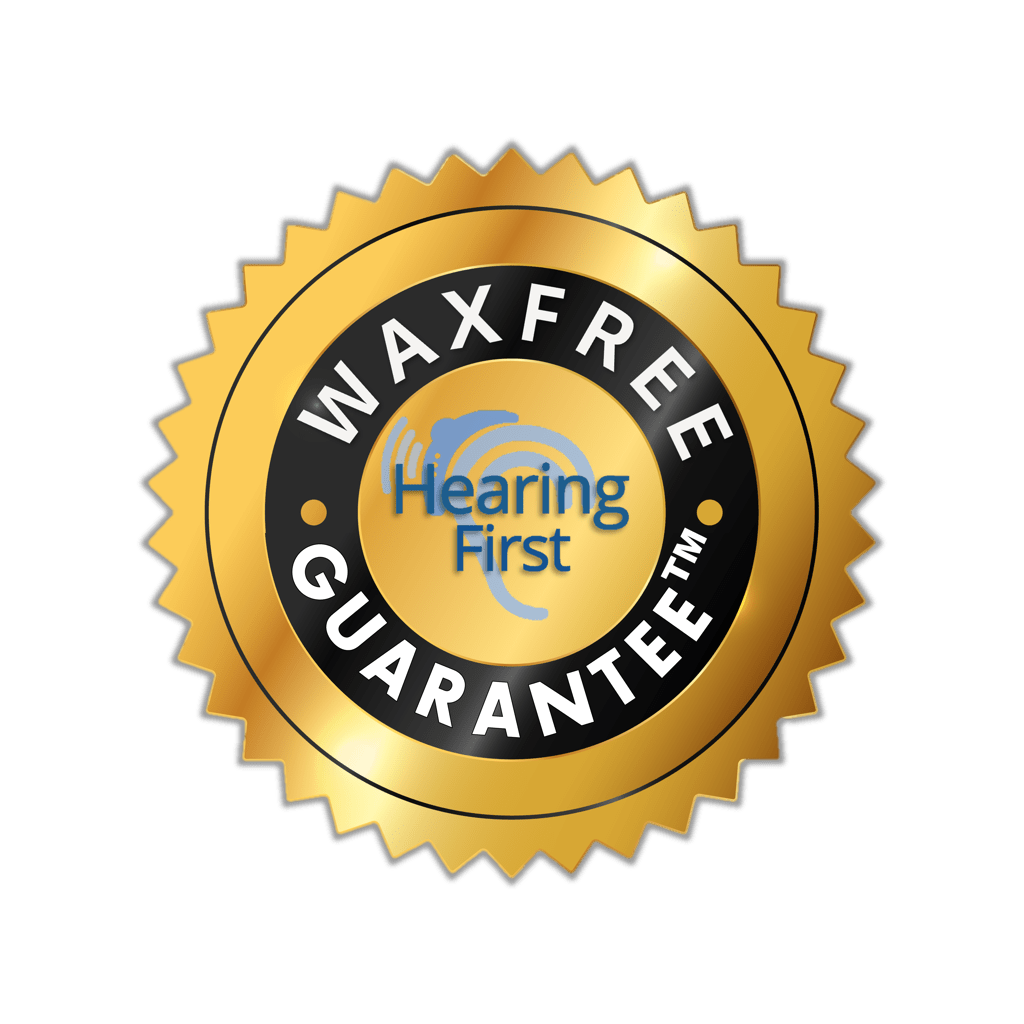
Edgware: Microsuction Ear Wax Removal Edgware NW7
Address:
31 The Broadway,London,
NW7 3DA
Professional ear wax removal Edgware clinicians. If you have a blocked ear, come to our ear wax removal Edgware clinic. We really are the ear wax removal experts in Edgware.
Hearing First Edgware – Microsuction Ear Wax Removal Edgware NW7 Map
Find A Microsuction Ear Wax Removal Network Clinic Near You
Frequently Asked Questions
-
Why do I need to soften my ear wax?
Our Audiologists are highly trained and experienced, and your safety is their utmost concern. The skin lining the ear canal ranges from 1mm thick at the entrance of the canal to 0.1mm thick at the ear drum. Ear wax is often hard and sticky (if it wasn’t hard and sticky it would come out by itself, as for the majority of people the ear is self-cleaning). Because the skin is so thin and delicate is is easily scratched or damaged by hard or sticky wax and that is the last thing we want to happen. There is also clinical research, which confirms that pre-softening earwax reduces the chances of dizziness or discomfort during a wax removal procedure.
-
When I use drops or spray my hearing gets worse. Should I stop?
No, don’t stop. The reason your hearing gets worse is because the drops or spray are filling in the tiny gaps around the wax. If the wax is dry, it will also expand as it softens and absorbs the wax softener (just like a raisin will plump up if it is put in a glass of water). This is a sign that the wax softener is working and will ensure you will have a comfortable, successful procedure. Please continue with the Hearing First Wax Busting Protocol™ until your appointment.
-
I’m unable to soften both ears due to my work / caring duties. What can I do?
This is something we have come across many times, and one of the reasons we offer a discount for single ear procedures. We recommend that you book for one ear and follow the Hearing First Wax Busting Protocol™ for one ear, and then do the same for the other ear afterwards.
-
I need ear wax removal urgently and don’t have time to soften it. What should I do?
If you are able to book 1 day in advance, we recommend that you talk to a chemist that sells Waxsol or Cl-ear™ Ear Relief Ear Drops over the counter and use that in both ears the night before and the morning of your appointment – it’s not as good as the Hearing First Wax Busting Protocol™, but it’s better than nothing! If you book on the day and haven’t been able to soften your ear wax at all, you will need to agree to a disclaimer and we will do our best to remove the ear wax, but unfortunately we cannot guarantee success in either of these cases.
-
I can’t find Earol, but I found something called Cl-ear Ear Spray – is that ok?
Yes. Cl-ear Ear Spray is almost equivalent to Earol, and can be used as part of our Waxbusting Protocol™. The difference between them is that Earol is in a sealed sterile container and can be used for up to 6 months, while Cl-ear Ear Spray is good to use for up to 28 days.
-
The Pharmacist says ordinary pharmacy grade olive oil with a dropper is just the same as Earol. Can I use that and still take advantage of the Hearing First Waxfree Guarantee™?
No, unfortunately you can’t. Earol incorporates a spray which micronises the oil into tiny droplets that penetrate the ear wax far more effectively than ordinary olive oil ear drops. Additionally, Earol should be used with the head held upright, which encourages the ear wax to move towards the ear canal entrance. Olive oil drops have to be applied with the head on the side, which encourages the ear wax to move closer to the ear drum, making the procedure more difficult.
Over the course of more than 50,000 ear wax removal procedures, we have developed the Hearing First Wax Busting Protocol™, which is safe and effective, and only this protocol will be accepted for the Hearing First Waxfree Guarantee™.
-
The Pharmacist says Otex Express is the best ear wax softener. Can I use that and still take advantage of the Hearing First Waxfree Guarantee™?
No, unfortunately you can’t. Otex spend a lot of money on marketing, and even Pharmacists can be persuaded by clever marketing campaigns. We have seen many patients with sore, red ear canals and peeling skin due to the peroxide that Otex Express contains. This causes unnecessary sensitivity and discomfort during a wax removal procedure.
Over the course of more than 50,000 ear wax removal procedures, we have developed the Hearing First Wax Busting Protocol™, which is safe and effective, and only this protocol will be accepted for the Hearing First Waxfree Guarantee™
-
The nurse / doctor / pharmacist recommended sodium bicarbonate ear drops as a cheap and effective wax softener. Can I use that and still take advantage of the Hearing First Waxfree Guarantee™?
No, unfortunately you can’t. The ear canal surface is designed to be acidic in order to discourage the growth of bacterial and fungal spores. While sodium bicarbonate is indeed effective at softening ear wax, it is alkaline and neutralises the acidity of the canal surface and can sometimes cause the upper layer of skin to peel off, especially when used for longer than 5 days. This can increase the chances of a painful outer ear infection (otitis externa), and make make the ear canal swollen and sensitive, making for an unnecessarily uncomfortable ear wax removal procedure.
Over the course of more than 50,000 ear wax removal procedures, we have developed the Hearing First Wax Busting Protocol™, which is safe and effective, and only this protocol will be accepted for the Hearing First Waxfree Guarantee™
-
Do you have any advice for ear care after ear wax removal?
When you use the Hearing First Wax Busting Protocol™, it greatly reduces the chances of scratches or damage to the ear canal surface. However, there may be microscopic scratches that we cannot see. We therefore recommend that you keep your ears dry for 4 to 5 days to allow the skin surface to start to recover. During this period, when you shower or wash your hair, you will need to get some cotton wool balls and Vaseline (or other petroleum jelly), saturate two cotton wool balls with the Vaseline, squish them up and place one in the outer bowl of each ear – this will prevent water from entering the ear canal.
Moving forwards, in order to reduce wax build up our advice has changed to keeping your ears dry as much as possible, rather than regularly applying olive oil. Our Director, Mary Levy studied this phenomenon over the course of 6 months and her research is published here.
-
I get itchy ears, especially after swimming or showering, and they sometimes get sore – what should I do?
We would always recommend booking an ear examination with an Audiologist or doctor before trying self-treatment, but a good product is Otinova, which can be purchased online in our web shop here. It contains several ingredients which are antibacterial and antifungal and reduce itching. If the itching continues despite 7 days treatment, we recommend you seek medical advice, as a prescription strength medicine may be necessary.
-
I’ve seen a plumber / beautician / nurse offering wax removal much cheaper – aren’t they just as good?
As with any private procedure, it is your choice where you go to get treatment, but as ear wax removal is an unregulated procedure you should be very careful who you allow in your ears. Here are some things to bear in mind:
o GP surgeries in the UK have largely stopped using nurses to provide ear wax removal services.
o Your ear drum is 0.1 millimetres (4 thousandths of an inch) thick, and while a repair operation can be carried out, success is not guaranteed. Remember, you have only one pair of ears. Look after them.
o Plumbers, beauticians, receptionists and other non-professionals will most likely have attended a one or two-day course in wax removal, and will not have an experienced mentor to directly supervise them after attending the course. One or two days will be the sum of their knowledge about ears. Do you really want them poking around in yours?
o All Hearing First Audiologists have studied Audiology for at least 6 months, and most have studied for at least 3 years. This includes the anatomy, physiology and pathology of the ear (the structure of the ear, how the ear works and how the ear can go wrong). Most of our clinicians also have a postgraduate Diploma in Pathology of the Auditory System and ENT Emergencies, which gives them further insight into ear care. We have been caring for people’s ears and their hearing for all our professional lives. This is what we do best. -
Who should be allowed to perform ear wax removal?
That’s a very good question. Ear wax removal procedures are unregulated, and any Tom, Dick or Harry can call themselves an ear wax removal practitioner. People only need to attend a one or two day course in ear wax removal and they can get professional indemnity insurance and open up a wax removal business with no experience.
The ear and the sense of hearing are very delicate and can be easily damaged – the ear drum is only 0.1 millimetres (4 thousandths of an inch) thick!
For the protection of the public, we recommend that in order to understand the risks associated with wax removal as well as other ear conditions that may at first appear to be a wax blockage but turn out to be something more serious, anyone carrying out ear wax removal should have at least 6 months’ training in the anatomy, physiology and pathology of the ear (the structure of the ear, how the ear works, and how the ear can go wrong). This would equate to a position with the title “Associate Audiologist” or “Audiologist Assistant”. This is the bare minimum, and these individuals should be working under the supervision of a Registered Hearing Aid Dispenser (an experienced Audiologist who is a healthcare professional registered with the HCPC), so that if they are unsure of something, they can call upon their mentor for advice. Other suitable professionals are ENT surgeons and ENT nurses who have a minimum of 3 years’ experience working under the supervision of an ENT surgeon.
We recommend that anyone carrying out ear wax removal should be on a relevant statutory professional register (such as the aforementioned HCPC or the GMC) or be supervised by a professional on a relevant statutory professional register, and have at least 6 months’ training about ears. This way you can be sure that that person will follow a professional code of conduct, performance and ethics, and have the depth of knowledge to be able to carry out the procedure to the highest level of safety.
I need ear wax removal using microsuction – do you provide this service?
Yes. All of our microsuction practitioners are trained, certified and insured to provide microsuction ear wax removal.
With 43 locations in London, Berks, Bucks, Cambridgeshire, Essex, Herts, Kent, Leicestershire, Norfolk, Oxfordshire, Suffolk, Surrey, Sussex, Staffordshire, Warwickshire, the West Midlands, Merseyside and Lancashire we’ve got you covered!
To book online, please click this link.
I need ear wax removal using manual instruments – do you provide this service?
Yes. All of our microsuction practitioners are certified, trained and insured to provide manual instrument ear wax removal, which is especially suitable for people who are very sensitive to loud noise.
With 43 locations in London, Berks, Bucks, Cambridgeshire, Essex Herts, Kent, Leicestershire, Norfolk, Oxfordshire, Suffolk, Surrey, Sussex, Staffordshire, Warwickshire, the West Midlands, Merseyside and Lancashire we’ve got you covered!
To book online, please click this link.
How must does ear wax removal cost?
Pricing can vary if it is one or two ears, at peak or off-peak times, how far in advance the booking is made, and by location.
Click here to check the most up to date prices for your location
My ears are very sensitive to loud noise. Is microsuction ear wax removal right for me?
If you find that moderately loud noise like a vacuum cleaner or hand dryer causes you physical pain, then microsuction may not be right for you. Instead, we would recommend manual instrument ear wax removal. Fortunately all of our practitioners are trained to offer manual instrument ear wax removal, which is especially suitable for people who are very sensitive to loud noise.
With 43 locations in London, Berks, Bucks, Cambridgeshire, Essex, Herts, Kent, Leicestershire, Norfolk, Oxfordshire, Suffolk, Surrey, Sussex, Staffordshire, Warwickshire, the West Midlands, Merseyside and Lancashire we’ve got you covered!
To book online, please click this link.
Do You Provide Microsuction Ear Wax Removal For Under 18s?
Yes: We provide microsuction ear wax removal for children aged 12-17 when accompanied by a parent or guardian.
With 43 locations in London, Berks, Bucks, Cambridgeshire, Essex, Herts, Kent, Leicestershire, Norfolk, Oxfordshire, Suffolk, Surrey, Sussex, Staffordshire, Warwickshire, the West Midlands, Merseyside and Lancashire we’ve got you covered!
To book online, please click this link.
Do You Provide Microsuction Ear Wax Removal For Under 12s?
Since the beginning of the Covid-19 crisis, we have unfortunately ceased to offer our service for under 12s.
How do you remove impacted ear wax?
If your ear has been examined by a doctor, nurse or Audiologist and your ear wax has been confirmed as being impacted, you should buy Waxsol from a Pharmacy and use it for two days before your procedure as advised in the patient leaflet. Otherwise we recommend that you use two squirts of Earol spray two to three times a day for at least three days before your procedure. When you come to your appointment, we will discuss any issues that may affect the procedure, examine your ear, then examine your ear with a portable ENT microscope. As long as it is safe to proceed, we will use gentle medical suction as well as specialist ENT instruments to safely and gently remove your impacted ear wax
To book online, please click this link.
Where can I get ear wax removal?
With 43 locations in London, Berks, Bucks, Cambridgeshire, Essex, Herts, Kent, Leicestershire, Norfolk, Oxfordshire, Suffolk, Surrey, Sussex, Staffordshire, Warwickshire, the West Midlands, Merseyside and Lancashire we’ve got you covered!
To find your nearest clinic and to book online, please click this link.
Do I need to soften my ear wax?
If you have confirmed soft ear wax, then you do not need to soften it as it is already soft. Also, if you have a perforated ear drum that has not healed, then you should not use ear drops before a microsuction procedure.
In every other case, pre-softening the wax is recommended: in “Aural microsuction for wax impaction: survey of efficacy and patient perception“, a significant finding was “Patients who had used cerumenolytics [ear drops or sprays] reported significantly less pain and vertigo [dizziness]”. Combining this important information with the study below (Suction-generated noise levels during aural toilet), we can conclude that patients should use 2 to 3 squirts of Earol spray (optionally with the addition of 3 glycerine drops 2 – 3 times a day) for at least 3 days prior to a microsuction procedure. Very hard impacted ear wax can also be softened with Waxsol used for two days prior to a microsuction procedure.
It is worth noting that there has been a recent review of various studies comparing the effectiveness of different types of ear drops. The conclusion is that no one brand of ear drop has been comprehensively shown to be better than any other. Nevertheless, we still recommend the use of Earol spray with the optional addition of glycerine drops as this has been shown to increase the comfort as well as reduce the chances of vertigo during a microsuction procedure.
We specifically recommend you do not use sodium bicarbonate or hydrogen peroxide ear drops: In a study called “Suction-generated noise levels during aural toilet“, noise levels were measured in the ear of an artificial model head using various suction tubes on different substances. It was noted that the suctioning of water generated very high levels of noise (over 130 dB(A)). For this reason we do not generally recommend the use of aggressive ear drops that contain sodium bicarbonate or urea hydrogen peroxide as it can make ear wax very watery, greatly increasing the noise level during the procedure. In addition, prolonged use of sodium bicarbonate ear drops can lead to an opportunistic infection of the ear canal (because sodium bicarbonate reduces the protective acidity level within the canal); and prolonged use of urea hydrogen peroxide drops can cause severe irritation to the skin surface in the ear canal in some people (hydrogen peroxide is bleach, after all).
To find your nearest clinic and to book online, please click this link.
On another website it says I don’t need to soften me ear wax. Why do you say it does?
We give research-backed reasons why you need to soften your ear wax in the above answer to “Do I need to soften my ear wax?”
Other websites say you don’t need to soften your ear wax because they want to get you through their door. If they then find that your ear wax is too hard, could you then be sure that they would stop and tell you that they weren’t entirely honest and you do actually need to soften your ear wax – and you’ll have to come back at another time?
We would rather be completely up front, outlining the benefits of pre-softening with Earol for you safety and comfort, as well as it greatly improving the chances of a successful procedure.
To find your nearest clinic and to book online, please click this link.
Do you offer ear syringing or ear irrigation?
At the Hearing First Microsuction Ear Wax Removal Network we never syringe or irrigate. Instead, we use the far safer microsuction and manual instrument methods to remove ear wax.
Syringing was routinely offered in GP surgeries, and was largely replaced in the 1980s with electric ear irrigators. However, in a 2002 article (Removal of ear wax | The BMJ), the BMJ reported that ear syringing carries with it a high chance of complications: perforation of the ear drum, otitis externa, damage to the external canal, pain, deafness, vertigo, and tinnitus are all possible with syringing.
Syringing and irrigation is also contraindicated (not recommended) in case of current or previous ear drum perforation, ear infection, presence of a grommet, or a history of ear surgery, whereas microsuction can be safely used in these cases.
Microsuction is much safer than syringing, but requires a significantly higher level of training. All of our audiologists are hand picked and undergo additional training in advanced ear wax removal methods, giving us an unrivalled success rate of 99.8%.
To find your nearest clinic and to book online, please click this link.
Do you provide microsuction ear wax removal on weekends?
Yes. Our London Baker Street microsuction ear wax removal clinic is open from 10 am until 4pm on Saturdays. Out of Hours appointments are limited, so please book early at this link.
Do you provide ear wax removal near me?
Yes, we do. We provide microsuction ear wax removal in Edgware, North London, and clients come to us from all over the capital. Nearby areas that we serve are Borehamwood,Stanmore, Colindale, Burnt Oak, Belmont, Queensbury, South Mimms, Brookmans Park, Potters Bar, Southgate, Stanmore, Hadley Wood, Arkley, Kitt’s End, Oakleigh Park, Highwood Hill, Whetstone, Northaw, Cockfosters, Hendon and Finchley. With 8 clinics in London, we really have got London covered. To book online, please click this link.
How must does ear wax removal cost?
Ear wax removal in Edgware starts at £34. Pricing can vary if it is one or two ears, at peak or off-peak times, and how far in advance the booking is made.

